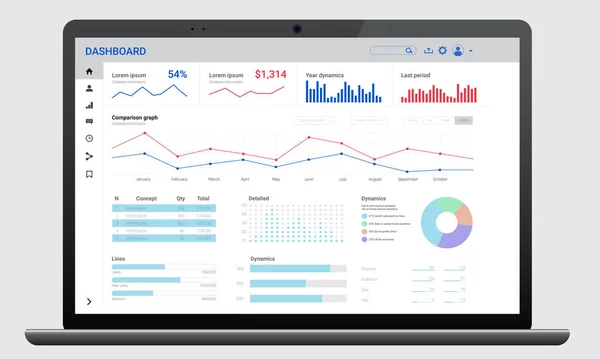Are you a blogger, social media manager or a content creator losing online traffic to poor SEO?
Don’t worry, you’re not alone. Google’s and other search engine frequent algorithm updated can significantly impact your site’s visibility. But with the right strategies, you can bounce back stronger.
Here are 13 essential SEO tips to help you improve your web traffic and thrive in the ever-evolving digital landscape.
Expand Table of Content
- 1. Understand SEO Algorithm Updates
- 2. Improve Content Quality
- 3. Optimize for E-A-T
- 4. Mobile Optimization
- 5. Improve Page Speed
- 6. Conduct Regular Technical SEO Audits
- 7. Align Content with User Intent
- 8. Build High-Quality Backlinks
- 9. Engage on Social Media
- 10. Monitor Analytics
- 11. Focus on User Experience (UX)
- 12. Optimize for Local SEO
- 13. Regularly Update Content
- 14. Utilize Video Content
- 15. Implement Voice Search Optimization
1. Understand SEO Algorithm Updates
Google’s algorithm updates aim to enhance user experience by delivering more relevant search results. Keeping up with these changes is crucial. Follow trusted sources like Search Engine Journal and Google’s Webmaster Central Blog for the latest updates and insights. Understanding the purpose behind these updates can help you make informed adjustments to your SEO strategy.
Related:
For instance, when Google rolled out the BERT update, it aimed to better understand the context of search queries. Websites with content closely aligned to user intent saw positive impacts. By understanding updates like BERT, you can tailor your content to match user queries more effectively. Additionally, stay informed about core updates that broadly affect how Google evaluates content across the web.
2. Improve Content Quality
High-quality content is the cornerstone of SEO. Google rewards content that is well-researched, comprehensive, and valuable to readers. Strive to create articles that deeply explore topics within your niche. Incorporate a mix of text, images, and videos to cater to diverse audience preferences.
For example, if you run a travel blog, instead of a generic “Top 10 Destinations” post, create detailed guides for each destination. Include itineraries, personal experiences, photos, and local tips to provide real value. High-quality content also means using proper grammar, clear language, and a structured format to make your articles easy to read and understand.
3. Optimize for E-A-T
Google’s focus on Expertise, Authoritativeness, and Trustworthiness (E-A-T) means you need to establish yourself as a reliable source. Showcase your expertise by having detailed author bios, link to credible sources, and ensure your content is accurate and up-to-date.
To ensure EAT, showcase;
- Expertise: Ensure your content is written or reviewed by experts in the field.
- Authoritativeness: Establish yourself as an authority by acquiring backlinks from reputable sites.
- Trustworthiness: Build trust by having a clear privacy policy, secure website (HTTPS), and displaying author credentials.
For instance, if you run a health blog, have content reviewed by medical professionals. Display their credentials and link to authoritative health sources. This builds trust and signals to Google that your content is reliable. Additionally, ensure your website has a professional design and that your contact information is easily accessible, which enhances credibility.
4. Mobile Optimization
With the rise of mobile-first indexing, ensuring your site is mobile-friendly is essential. Use responsive design so your website adapts to various screen sizes seamlessly. Regularly test your site’s mobile usability using Google Search Console and address any issues promptly.
For example, a food blog can enhance user experience by ensuring recipes are easily readable and navigable on mobile devices. Simplify navigation and ensure images load quickly on smartphones and tablets. Implementing Accelerated Mobile Pages (AMP) can also improve load times and performance on mobile devices.
5. Improve Page Speed
Page speed is a critical ranking factor. Use Google PageSpeed Insights to identify areas for improvement. Optimize images, enable browser caching, and utilize a Content Delivery Network (CDN) to enhance load times.
For instance, an e-commerce site can benefit from faster loading times, reducing bounce rates, and improving conversion rates. Compress product images and streamline your site’s code to enhance performance. Also, consider minimizing the use of heavy scripts and plugins that can slow down your site.
6. Conduct Regular Technical SEO Audits
Regular technical SEO audits ensure your site remains accessible and efficient for search engines. Use tools like Screaming Frog or SEMrush to identify and fix issues such as broken links, duplicate content, and improper indexing. Implement schema markup to help search engines understand your content better.
For example, a blog with a large archive should regularly check for broken links in older posts. Fixing these can improve user experience and search engine crawl efficiency. Additionally, ensure your site has a clear XML sitemap and a properly configured robots.txt file to guide search engine crawlers effectively.
7. Align Content with User Intent
Understanding and meeting user intent is crucial. Use keyword research tools to discover what your audience is searching for and tailor your content to address their needs. Whether users are seeking information, looking to make a purchase, or navigating to a specific site, your content should fulfill their intent.
For instance, if you run a fitness blog, identify whether users are searching for workout plans, nutritional advice, or equipment reviews. Create content that matches these specific intents to better meet user needs. Additionally, use long-tail keywords and questions that users might type into search engines to capture more targeted traffic.
8. Build High-Quality Backlinks
Quality backlinks from reputable sites enhance your site’s authority. Create content that others want to link to, engage in guest blogging, and build relationships with influencers in your industry.
For example, a technology blog can create in-depth reviews of new gadgets. High-quality reviews are often linked to by other tech sites and forums, enhancing your backlink profile. Participating in relevant forums, Q&A sites, and industry events can also help you build connections that lead to valuable backlinks.
9. Engage on Social Media
Social media can drive significant traffic to your site and indirectly boost your SEO. Share your content on platforms where your audience is active, engage with followers, and encourage shares to increase visibility.
For instance, a fashion blogger can use Instagram to showcase new blog posts with engaging visuals and captions, driving traffic back to the blog. Consistently sharing content and interacting with your audience on platforms like Twitter, Facebook, and LinkedIn can also expand your reach and build a loyal following.
10. Monitor Analytics
Regularly monitoring your website’s performance helps you understand what works and what doesn’t. Use Google Analytics to track key metrics like bounce rate, session duration, and traffic sources. Analyzing this data can provide insights into areas for improvement and help you refine your strategy.
For example, a business blog can identify which topics generate the most engagement and focus on creating more content in those areas. Monitoring metrics helps in understanding audience preferences better. Additionally, use tools like Google Search Console to track your site’s performance in search results and identify potential issues affecting your rankings.
11. Focus on User Experience (UX)
A positive user experience is essential for retaining visitors and improving SEO. Ensure your site is easy to navigate, with clear menus and intuitive design. Content should be easy to read, with appropriate use of headings, bullet points, and images. Interactive elements like forms and buttons should function smoothly.
For instance, a news site should ensure that articles are easily accessible, with a clean layout and minimal distractions. Smooth navigation encourages readers to stay longer and explore more content. Incorporate features like internal linking to guide users to related articles, enhancing their overall experience and increasing page views.
12. Optimize for Local SEO
If your business targets a local audience, optimizing for local SEO is crucial. Ensure your Google My Business listing is complete and accurate. Use local keywords in your content and acquire reviews from local customers. This can help you rank higher in local search results and attract more local traffic.
For example, a local bakery can optimize their site by including location-specific keywords and ensuring their address and contact information are prominently displayed. Positive customer reviews on Google My Business can also boost local rankings. Additionally, participate in local events and community activities to build local backlinks and enhance your local presence.
13. Regularly Update Content
Keeping your content fresh and up-to-date is important for maintaining relevance. Regularly update older posts with new information and insights. This not only improves your rankings but also keeps your audience engaged with current, valuable content.
For instance, a tech blog should update posts about software with the latest version details and new features. This ensures the content remains relevant and valuable to readers. Additionally, consider repurposing older content into different formats, such as turning a popular blog post into a video or an infographic, to reach a broader audience.
14. Utilize Video Content
Video content is becoming increasingly important in SEO and user engagement. Creating videos can enhance your content’s appeal and keep young millennials an Gen Z visitors on your site longer, which positively impacts your SEO.
For example, a cooking blog can create recipe videos that demonstrate the cooking process step-by-step. These videos can be embedded in your blog posts, shared on social media, and uploaded to platforms like YouTube to attract a wider audience.
15. Implement Voice Search Optimization
With the rise of smart speakers and voice assistants, optimizing for voice search is becoming more important. Voice search queries are often longer and more conversational, so your content should reflect this.
For instance, a DIY home improvement blog can create content that answers common voice search queries like “How do I fix a leaky faucet?” Use natural language and provide clear, concise answers to improve your chances of appearing in voice search results.
Conclusion
Adapting to Google’s algorithm updates is an ongoing process. By focusing on these 13 strategies, you can enhance your website’s performance, recover lost traffic, and build a stronger online presence. Prioritize high-quality content, stay informed about SEO best practices, and continuously refine your approach to meet the evolving demands of the digital landscape.
Implement these tips, and watch your web traffic improve steadily over time. Remember, consistency and patience are key to long-term success in digital media. Happy blogging!



